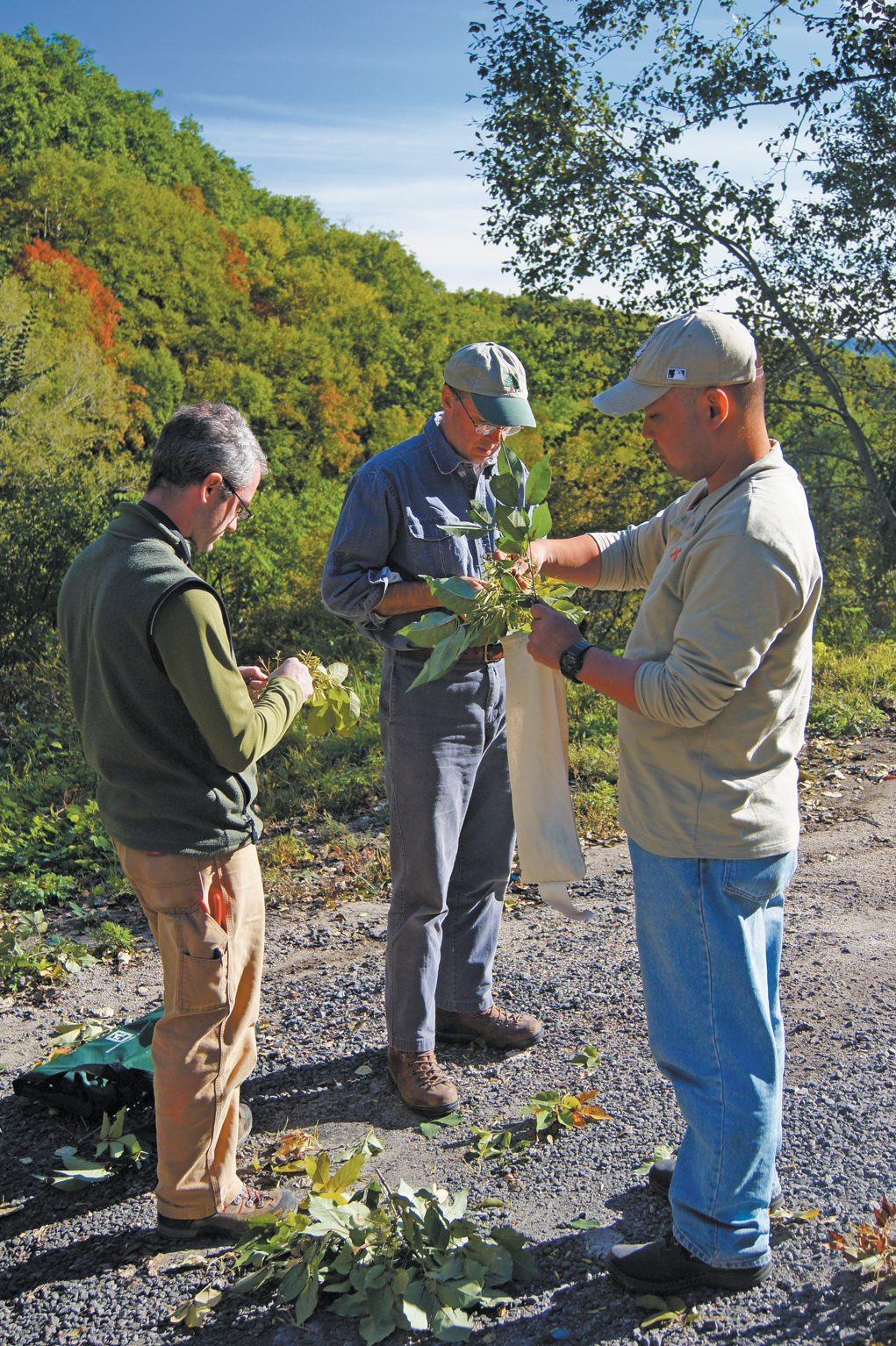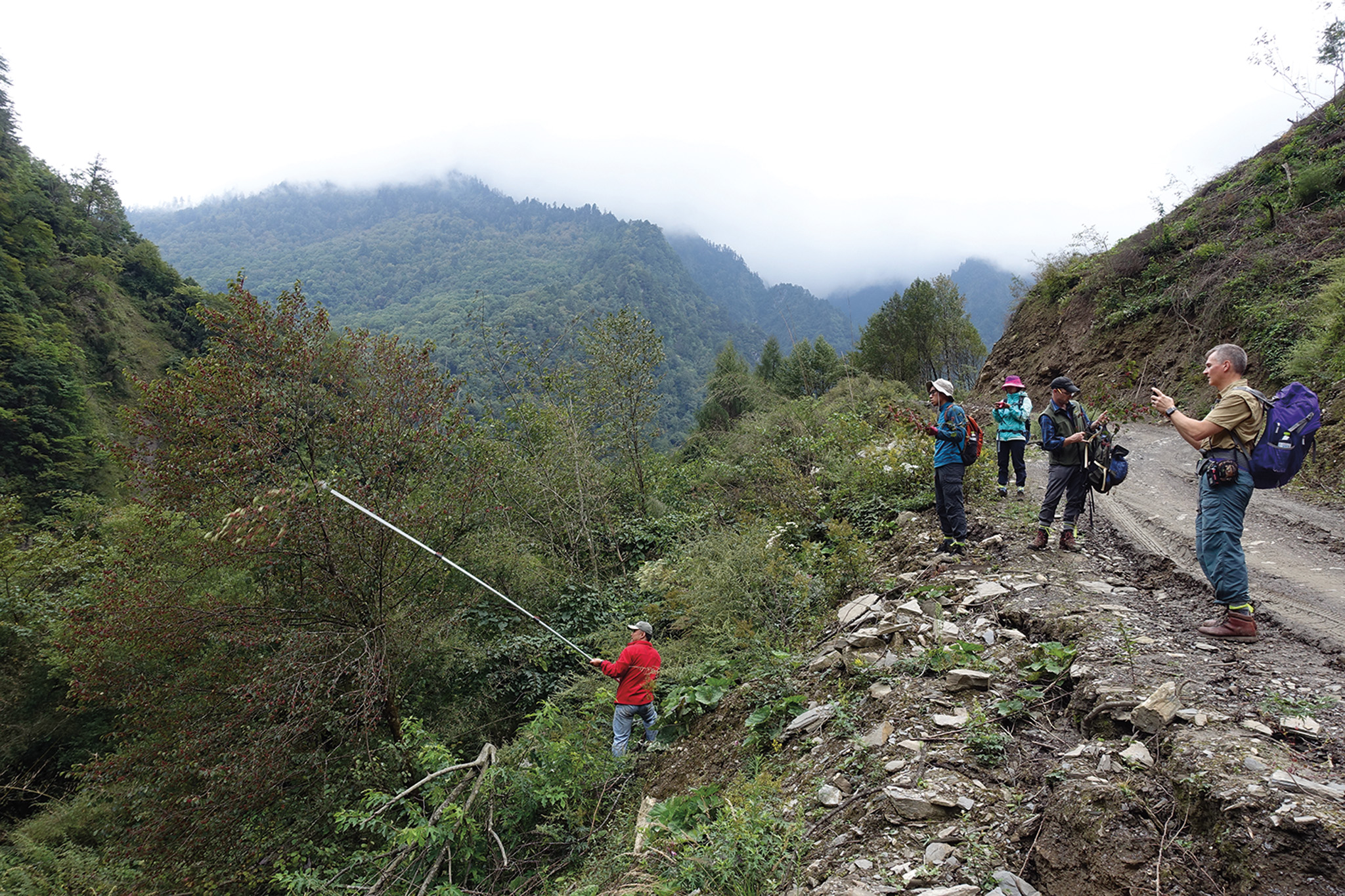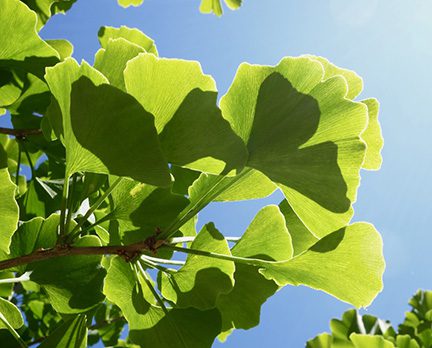
Franklin Tree
Franklinia alatamaha
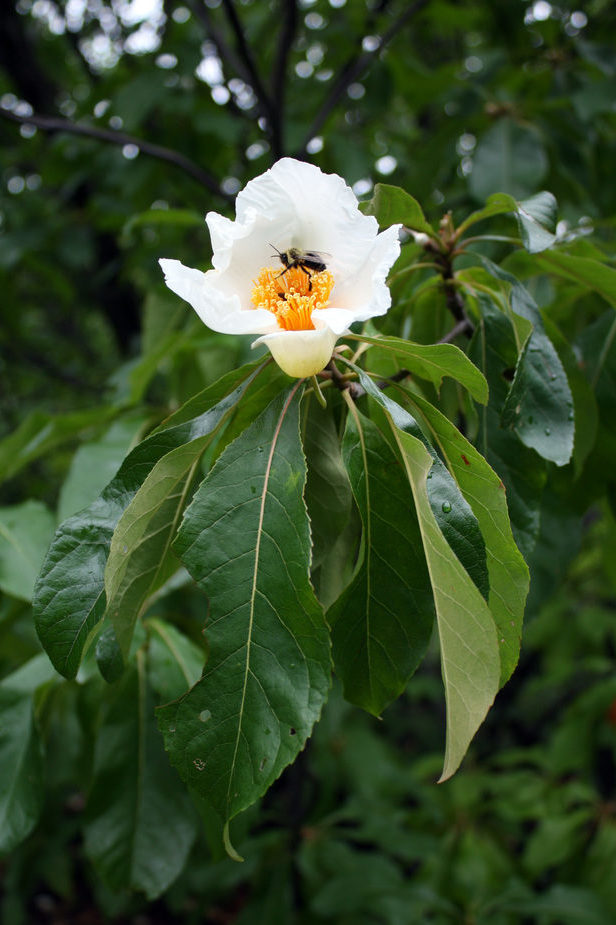
- Accession Number
- The alpha-numeric value assigned to a plant when it is added to the living collection as a way of identifying it.
- Accession Date
- The year the plant’s accession number was assigned.
- Common Name
- The non-scientific name for the plant.
- Scientific Name
- The scientific name describes the species of an organism. The first word is the plant's scientific genus and the second is the specific epithet. This two-word binomial is sometimes followed by other taxonomic descriptors, including subspecies (denoted by "ssp."), variety (denoted by "var."), form (denoted by "f." or "forma"), and cultivar (denoted by single quotation marks).
- Plant Family
- The family to which the plant belongs.
- Propagation Material
- The first part (material code) describes the material used to create the plant. The most common codes are "SD" (seed), "EX" (existing plant), "PT" (plant), "CT" (cutting), "SC" (scion), "SG" (seedling), and "GR" (graft). The second part describes the lineage the plant is derived from. The last part describes the year of propagation.
- Collection Data
- The first part indicates provenance (place or source of origin) using a letter code ("W" = wild, "G" = garden, "Z" = indirect wild, "U" = uncertain). The second part lists the plant source. For wild-collected material, the collector, collection number, and country are given.
- Location
- The location of the plant on the landscape.
THOS. MEEHAN & SON, PA
Extinct in the wild, this unique species is conserved in arboreta and botanical gardens around the world.
The earliest mention of what would come to be called the Franklin tree appears in a journal entry in 1765. A father and son were on a trip through the southeastern part of the then British colony of Georgia when they noticed a striking tree growing along the banks of a river. The father, John Bartram, wrote that he’d seen “several very curious shrubs” in his journal.
Born into a Quaker family in Pennsylvania in 1699, Bartram had developed a keen interest in botany. He travelled throughout the American colonies and what is today Florida, collecting seeds of interesting plants to grow in a corner of his farm.
He also sent seeds abroad. Through his correspondence with botanists in Europe, Bartram was responsible for the introduction of many North American species into Europe. In 1765, King George III named Bartram “King’s Botanist in North America,” a position which came with £50 a year.
Bartram’s son, William, returned to the area in Georgia to collect seed of the Franklin tree several years later. In 1791, he wrote, “We never saw it any other place, nor have I ever seen it growing wild, in all my travels, from Pennsylvania to Point Coupe, on the banks of the Mississippi.” He brought the seeds back to Philadelphia. His collection of the species was timely; within 50 years, the tree was extinct in the wild. All living Franklin trees—which Bartram named for family friend Benjamin Franklin—are descended from the seeds Bartram collected.
Without William Bartram’s initial collection of Franklin tree in 1776 and subsequent conservation work at institutions like the Arnold Arboretum, the species would no longer exist—and may have never been discovered before becoming extinct in the wild. Every Franklin tree alive today descends from the seed gathered and sown by Bartram. Ex situ conservation Ex situ conservation: The process of protecting a species outside of its natural habitat. efforts of botanical gardens and arboreta around the world are crucial to this species’ survival.
Click here to read a transcript of the audio segment below.
Georgia
Viewing this plant in-person? Look for these defining characteristics:
About Our Collection
Fun Facts
Stats
- Living Specimens
- Specimens Dead or Removed
- First Addition
- Most Recent Addition
- Tallest Specimen

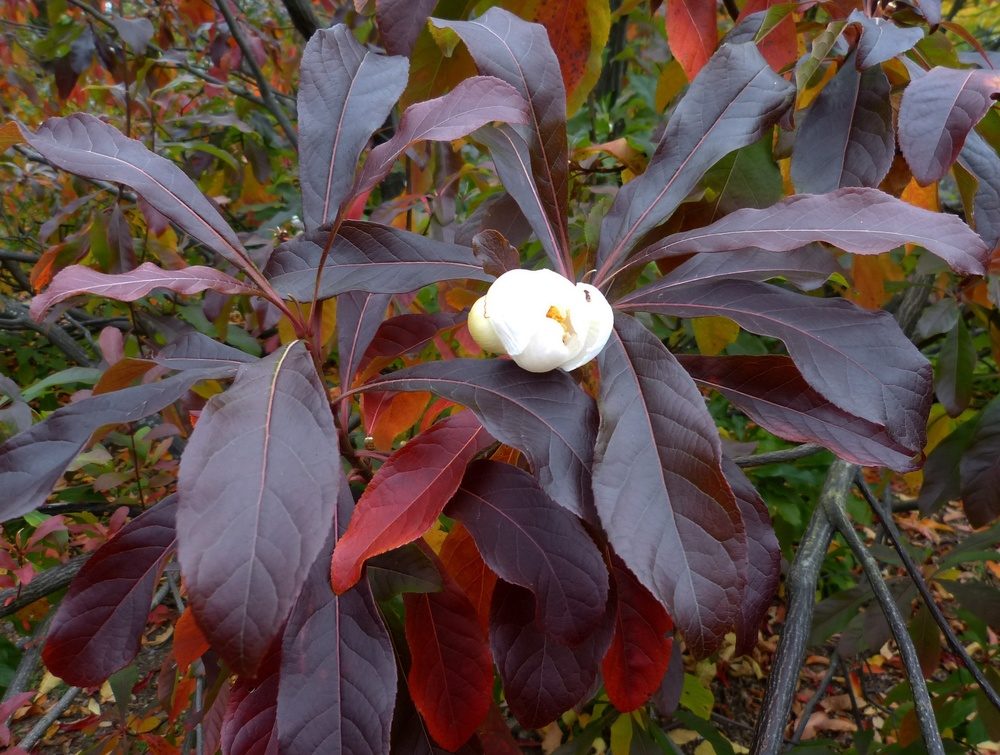

Living Specimens
| Plant ID | Accession Date | Received As | Origin | Source |
|---|---|---|---|---|








